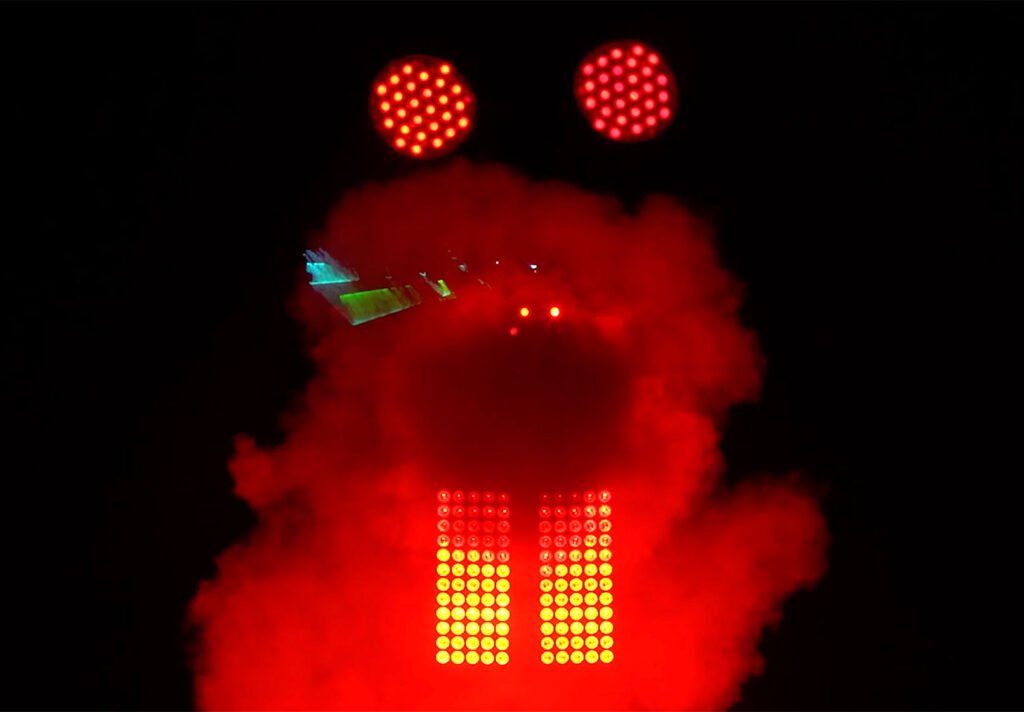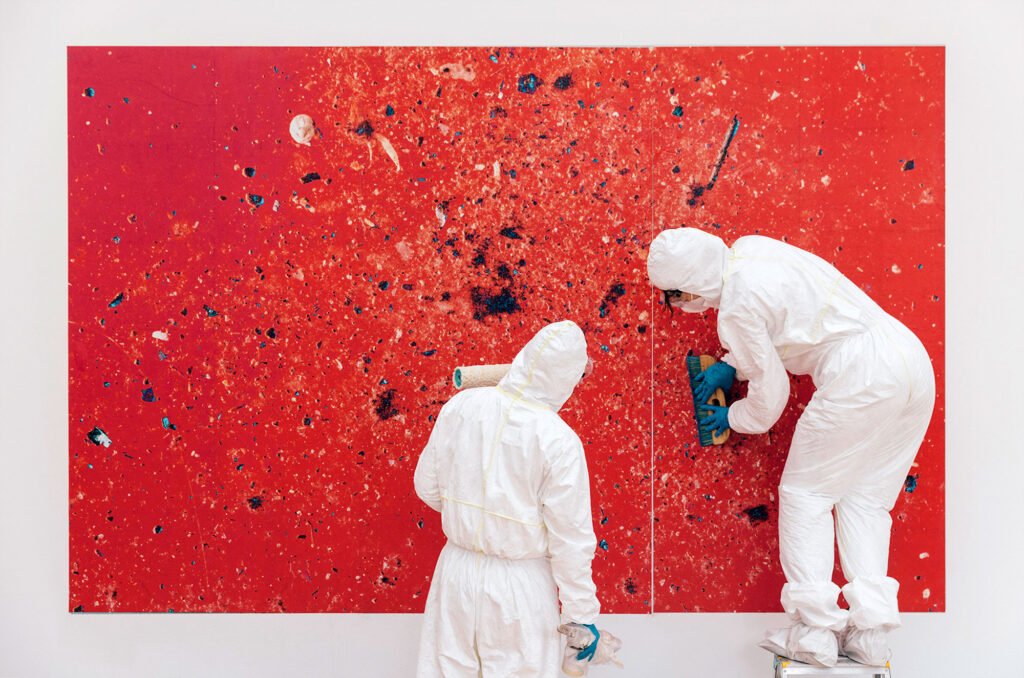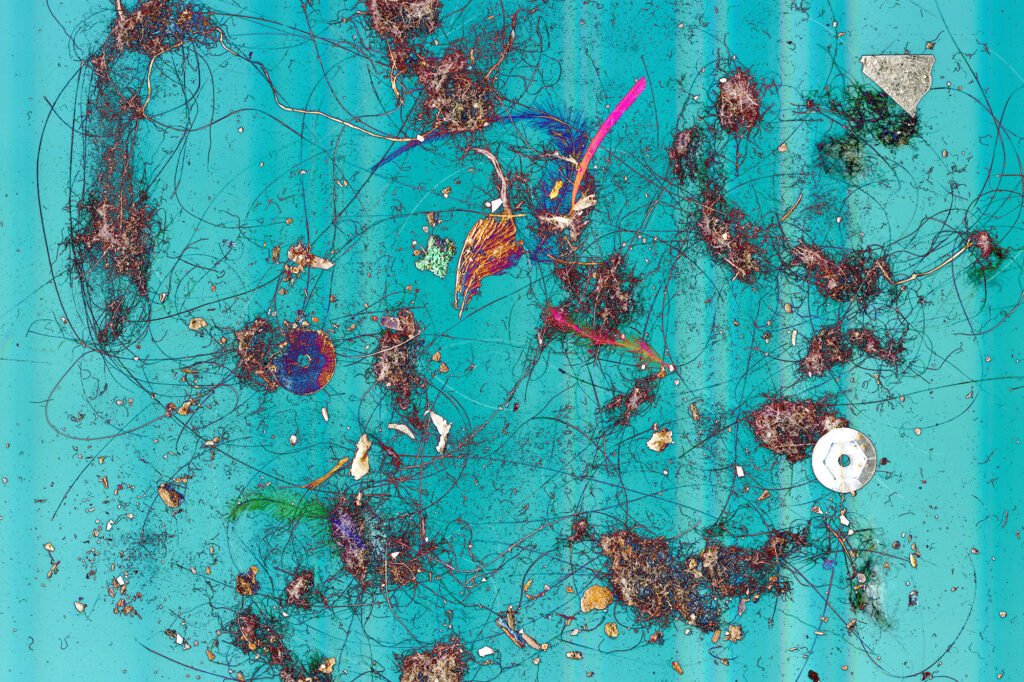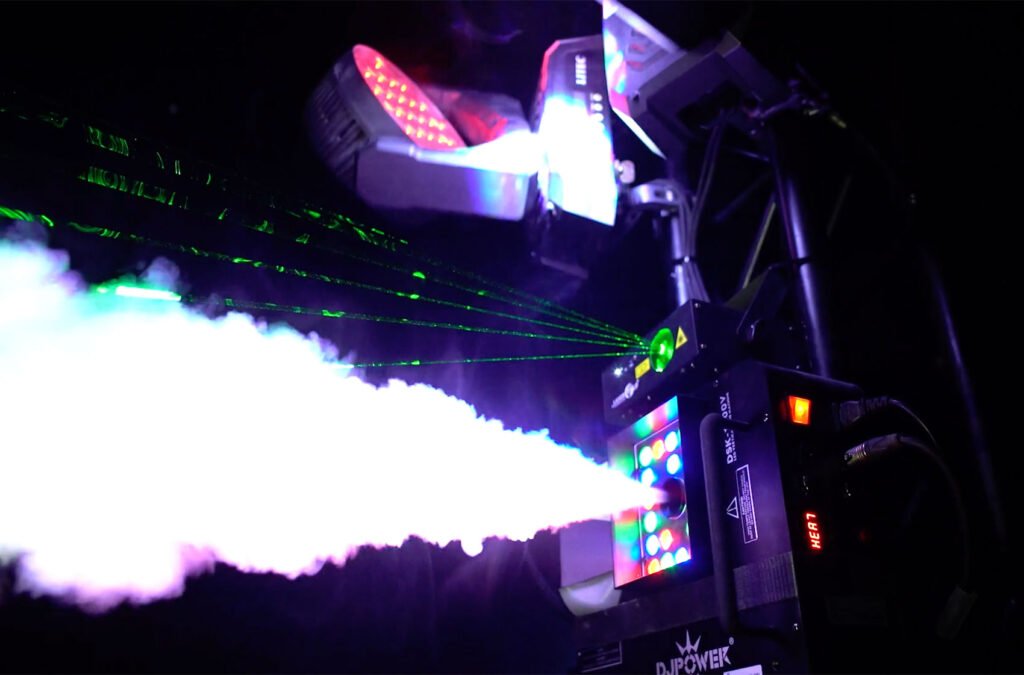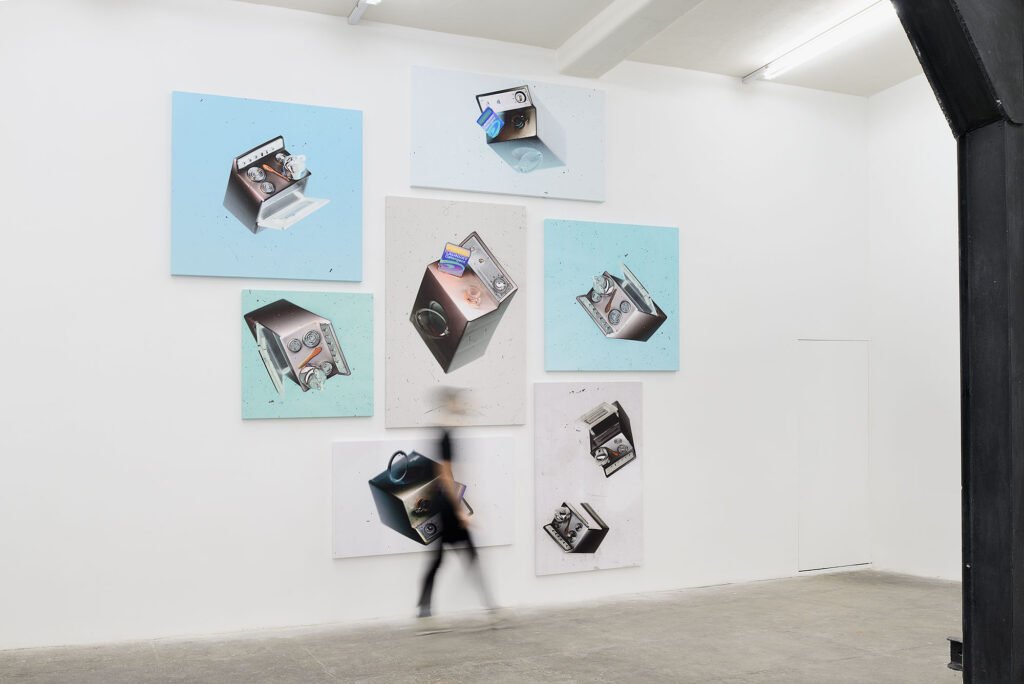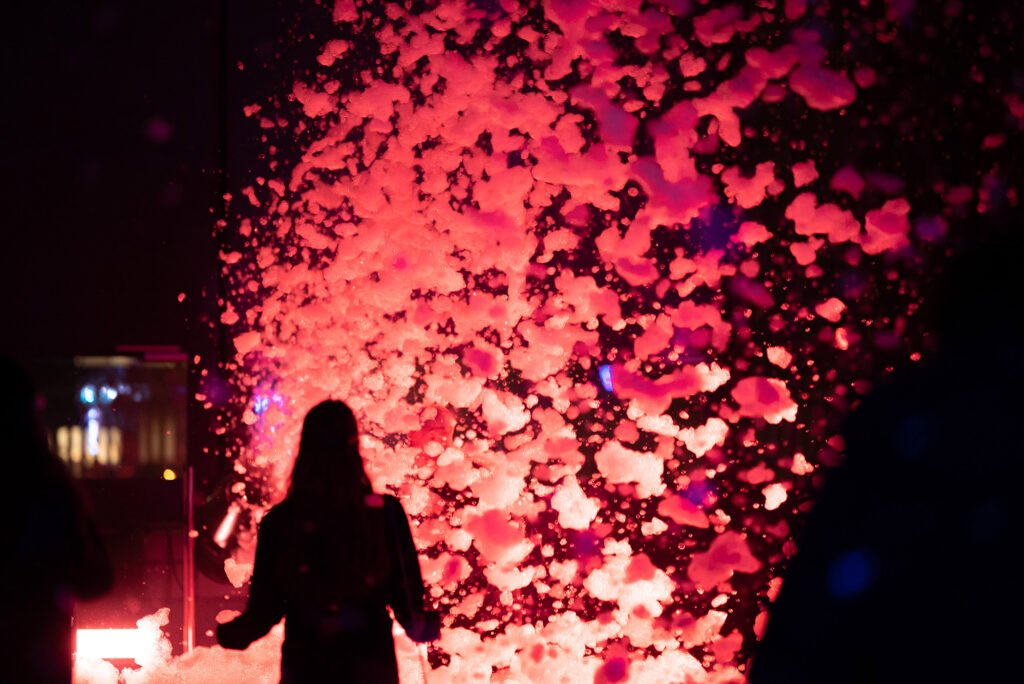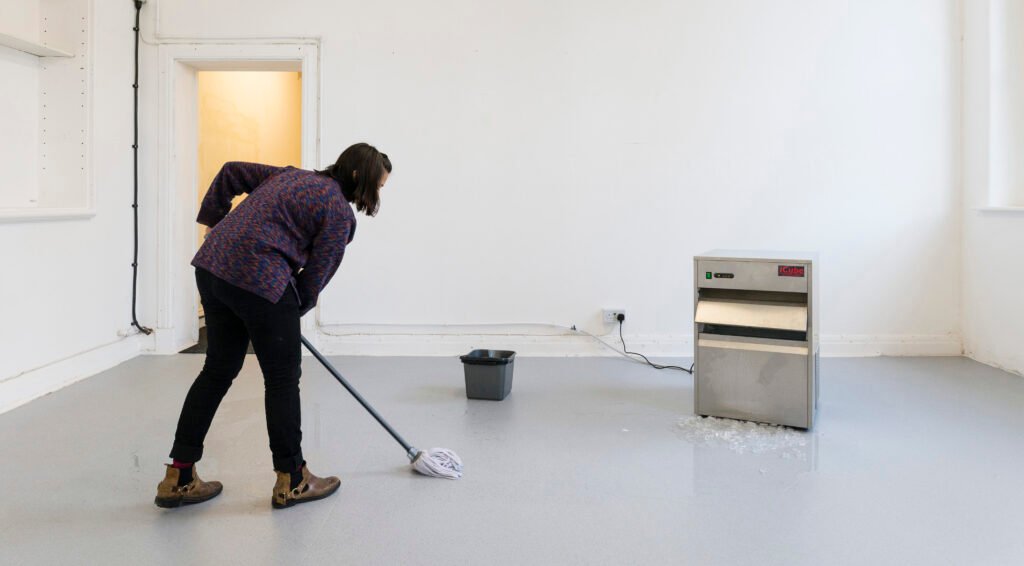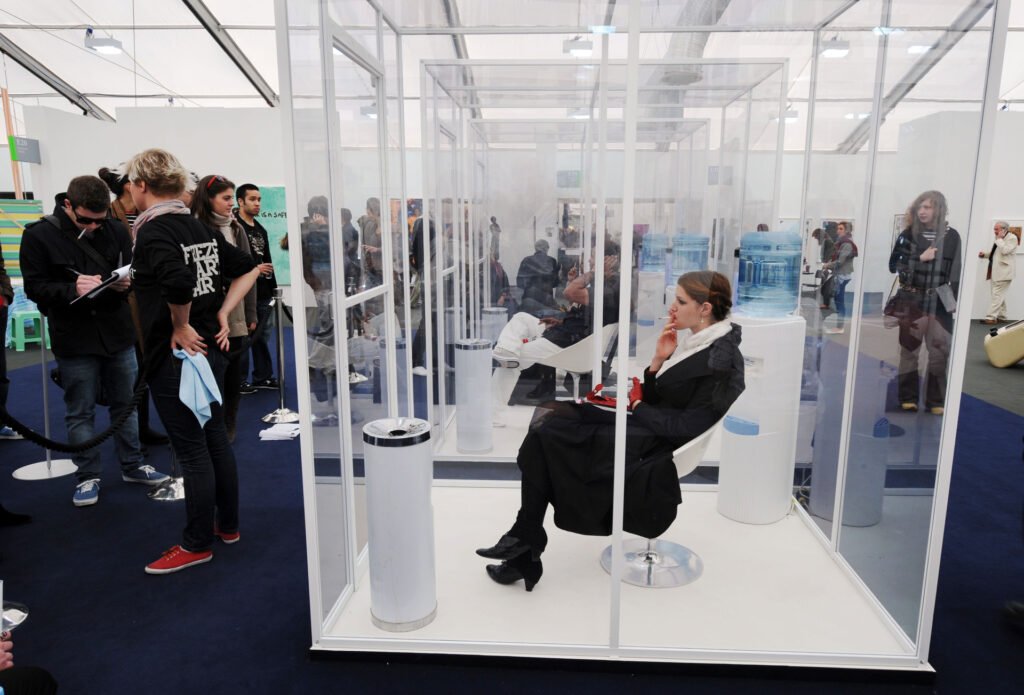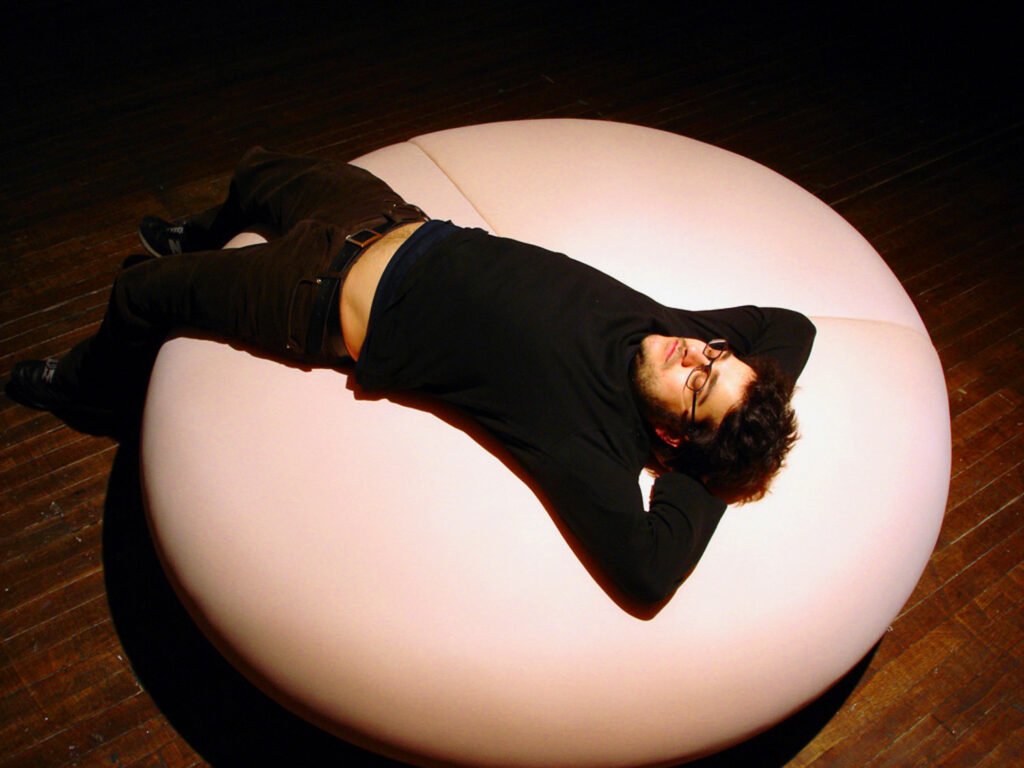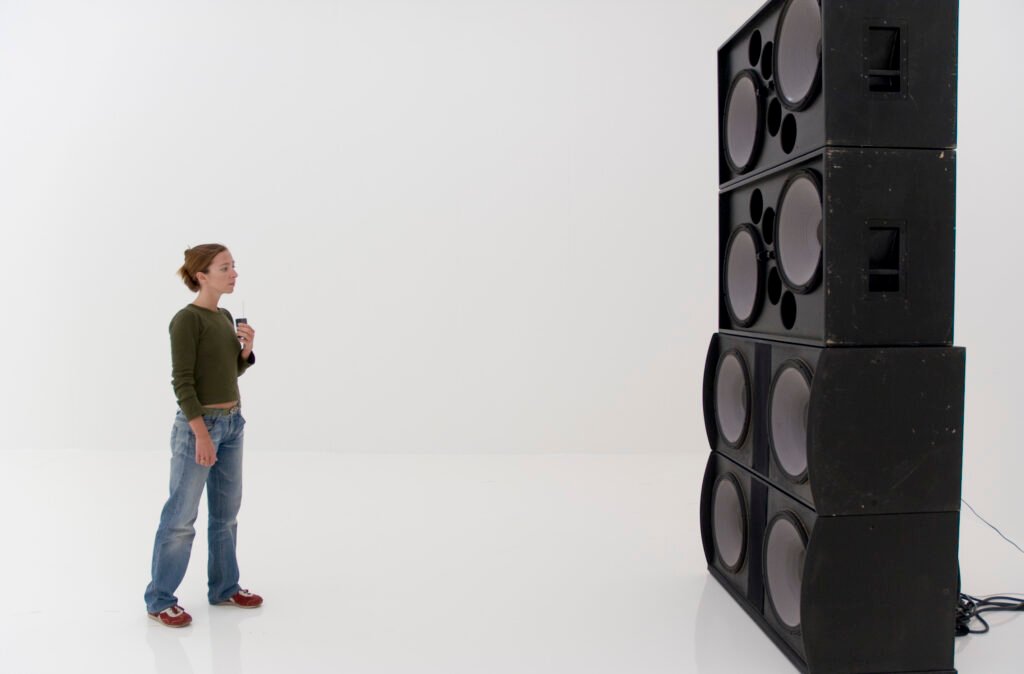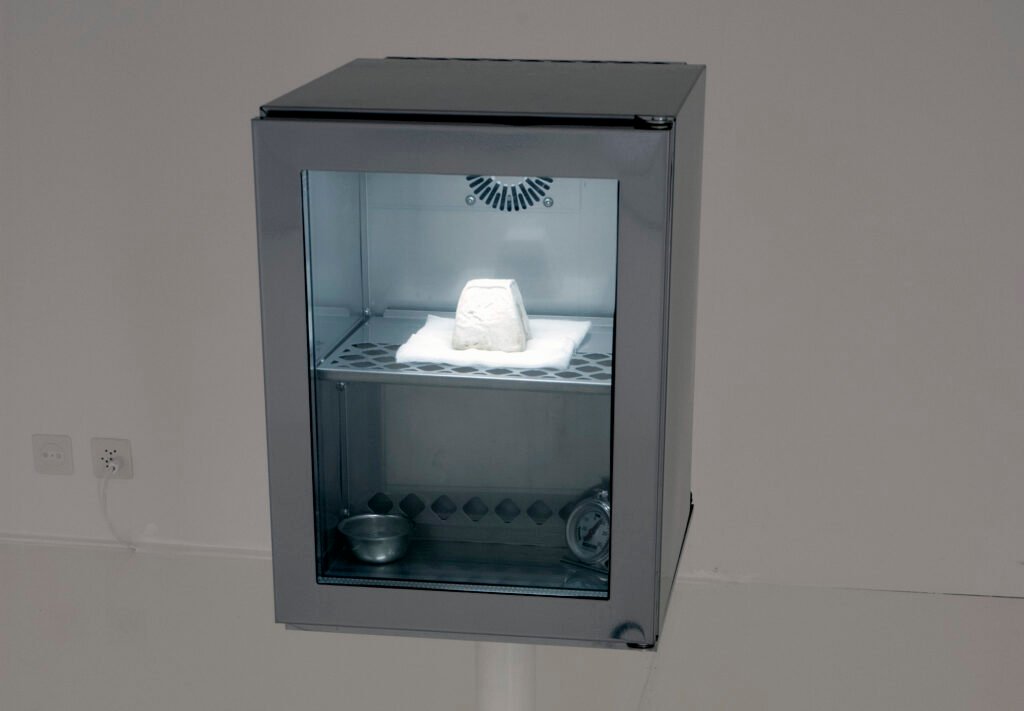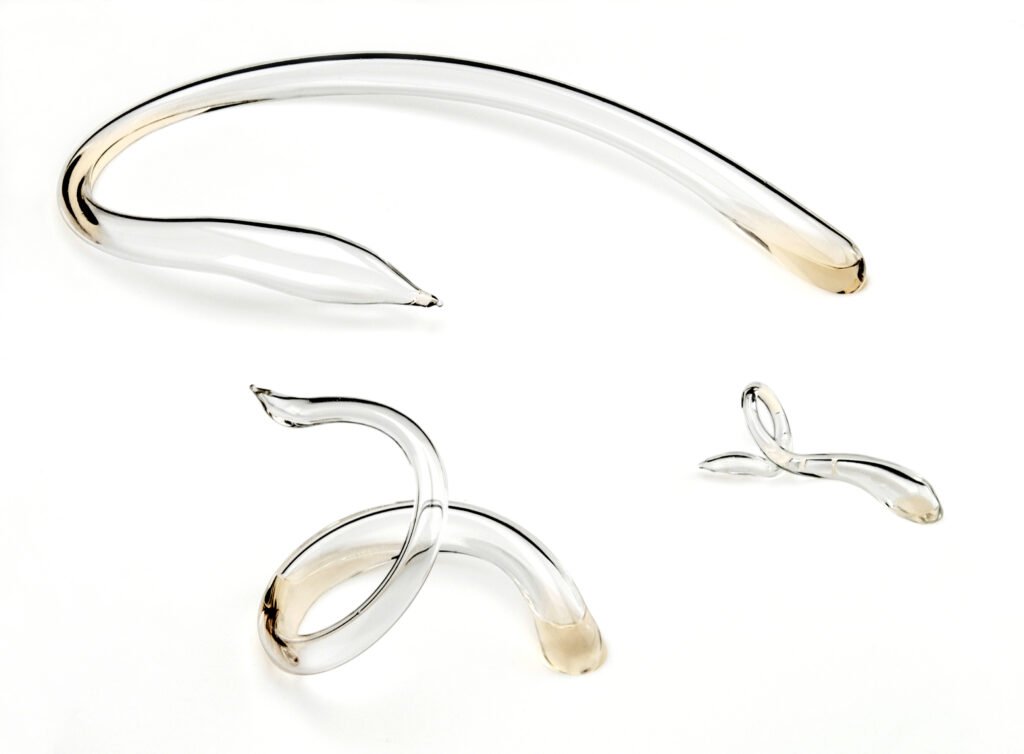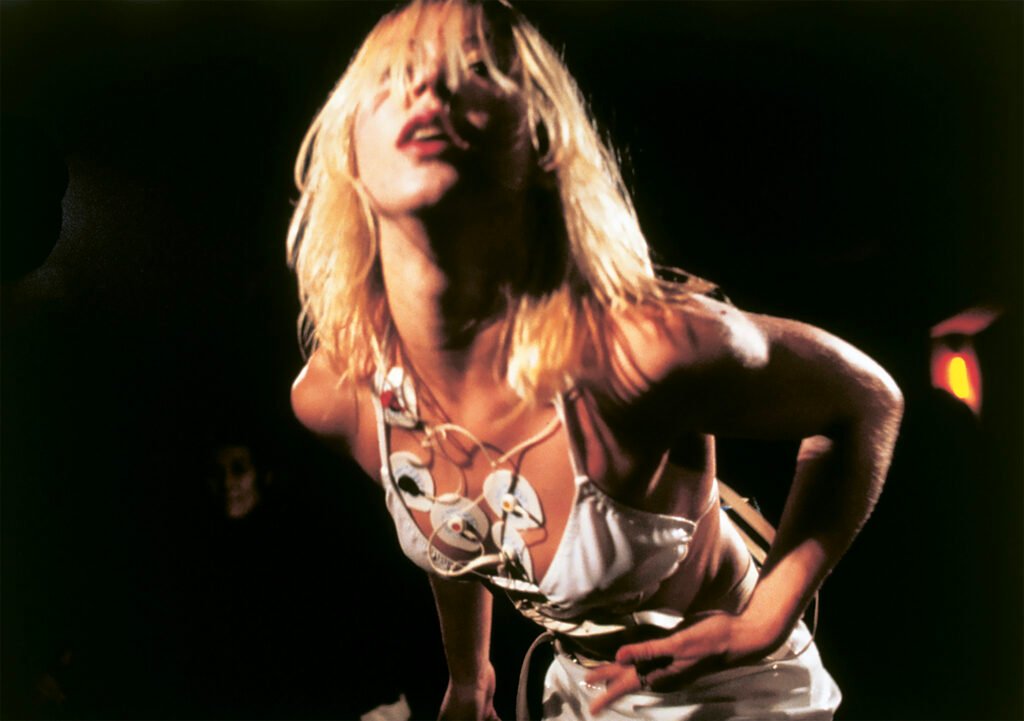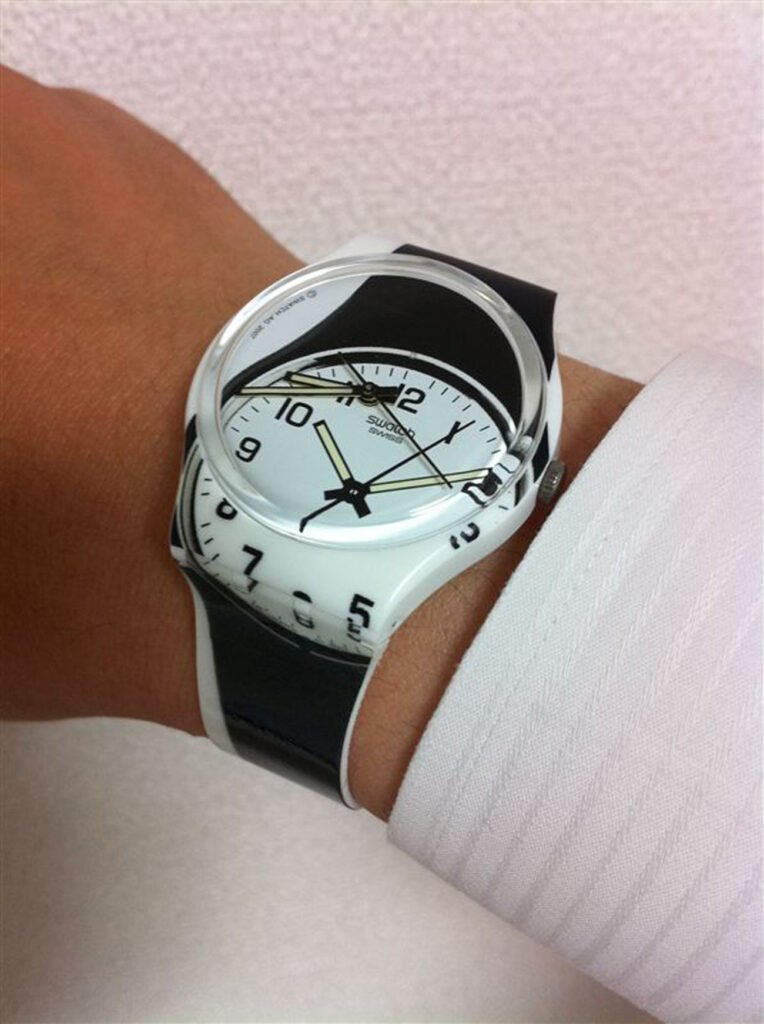biography
Norma Jeane is an artist who does not wish to be identified. Pretending to be born in Los Angeles on the night between August 4th and 5th, 1962—the same night Marilyn Monroe (the movie star) died, they assume a fictional and symbolic identity. By renouncing a fixed gender, and cultivating a proliferation of personas, their identity becomes a collective one, comprising all those who contribute to the making of each work. At the same time, this choice is central to Norma’s work, which brings to the fore the complexities and contradictions hidden beneath the “pop” façade of the everyday—echoing the contrast between the vulnerable figure of Norma Jeane and the glittering persona of Marilyn.
Norma’s personal biography is defined solely by their artistic curriculum. Their multidisciplinary work explores our identity—and the evolving relationship between the human, the environment, and technology—through public ritual sacrifices of technological objects, live interactions with viewers, and the creation of icons from typically overlooked subjects ranging from trivial consumer goods to plain scrap.
They have participated in numerous public art events and exhibitions at major international museums and biennials, including MoMA (New York), Palais de Tokyo (Paris), Martin Gropius Bau (Berlin), Schirn Kunsthalle (Frankfurt), Frieze Projects (London), Culture Station 284 (Seoul),Inside-Out Museum (Beijing), Noor Festival (Riyadh), Venice Biennale, Lyon Biennale, Liverpool Biennial, Desert X Biennial (Palm Springs), Quadriennale di Roma, among others. Additionally, they have participated in international residencies, such as the P.S.1 International Studio Program in New York.
Their work has been reviewed and discussed in numerous publications, including Artforum, Tate Etc., Frieze, Flash Art, Art–Das Kunstmagazin, The Art Newspaper, The New York Times, Los Angeles Times, The Guardian, The Sunday Times, The Financial Times, The Telegraph, Evening Standard, Tages Anzeiger, Le Monde, Libération, La Repubblica, Vogue, L’Espresso, Wired, Dazed & Confused, Wallpaper, Rolling Stone, and many others.
Most exhibitions were accompanied by catalogues, and in 2004, an in-depth monograph titled Norma Jeane: Body Proxy was published by JRP/Ringier.

